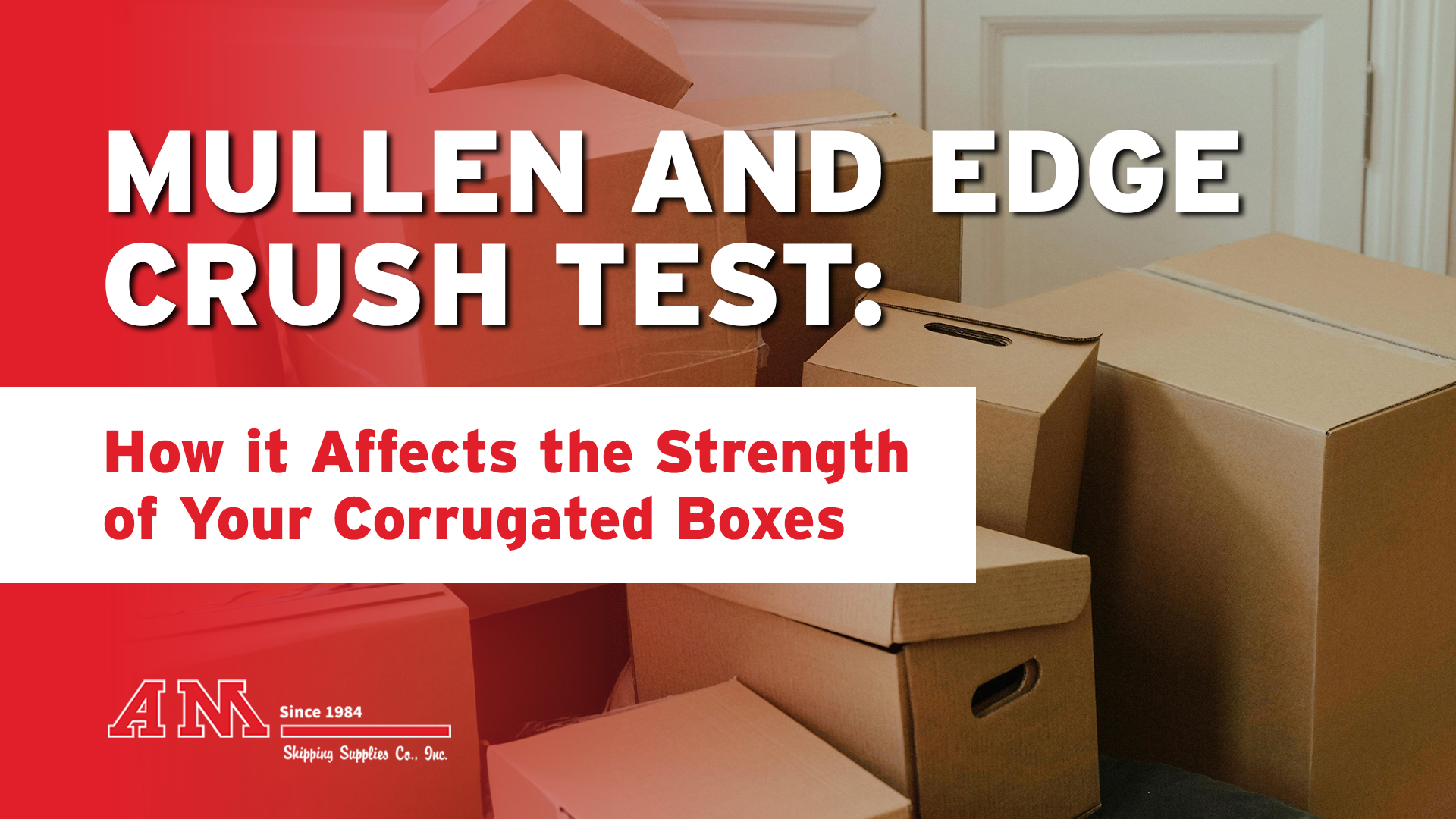Mullen and Edge Crush Test: How it Affects the Strength of Your Corrugated Boxes
Mullen and Edge Crush Test: How it Affects the Strength of Your Corrugated Boxes

As a business owner, you have invested countless hours into perfecting your products, from design and manufacturing to developing marketing and sales strategies. Now, you face a critical challenge: ensuring your products reach your customers in perfect condition.
Your products are not just items; they are the embodiment of your brand and the promise you make to your customers. Ensuring they arrive safely is paramount. You know that damaged goods can lead to customer dissatisfaction, returns, and ultimately, a negative impact on your brand’s reputation. Therefore, it is essential to choose packaging that is durable.
In this blog, we will explain the two essential tests used to measure the strength of corrugated boxes: the Mullen Test and the Edge Crush Test. We will explore what these tests entail and how the results reflect the durability of your packaging. Additionally, we will outline the standard testing methods and procedures used to conduct these assessments.
Mullen Test
What is the Mullen Test?
The Mullen Test determines the bursting strength of a corrugated box by applying hydraulic pressure to a specific area until the box material ruptures. The test's primary goal is to assess the box's ability to withstand external forces that could cause it to burst or fail, ensuring that the contents remain protected throughout the shipping process.
Test Procedures
- Sample Preparation: A sample of the corrugated box material is cut to a specific size, typically a 7.5 x 7.5-inch square. The sample should be representative of the box's actual construction, including all layers of corrugated fiberboard.
- Mounting the Sample: The sample is placed in the Mullen Burst Tester, a machine equipped with a circular clamp that holds the material securely in place. The sample is centered over a rubber diaphragm, which will apply the hydraulic pressure.
- Applying Pressure: Hydraulic pressure is gradually applied to the underside of the sample via the rubber diaphragm. The pressure increases steadily until the sample bursts. The machine measures the maximum pressure the material withstands before failure.
- Recording Results: The burst strength is recorded in pounds per square inch (psi) or kilopascals (kPa). This value indicates the maximum pressure the box material can endure before bursting.
What Do the Results Mean?
A higher burst strength indicates that the box can withstand greater external pressure without failing, making it suitable for packaging heavy or fragile items. Conversely, a lower burst strength suggests that the box may be more susceptible to damage under similar conditions.
Boxes with adequate burst strength ensure that products are well-protected during transit, reducing the risk of damage and maintaining customer satisfaction.
Edge Crush Test
What is the Edge Crush Test?
The Edge Crush Test assesses the ability of corrugated cardboard to resist crushing forces applied to its edges. This test is particularly important for boxes that will be stacked during storage or shipping, as it helps ensure that the boxes can support the weight of the other boxes placed on top without collapsing.
Test Procedures
- Sample Preparation: A sample strip of corrugated cardboard, typically measuring 2 inches by 12 inches, is cut from the box material. The sample should be representative of the box’s construction, including all layers of corrugated fiberboard.
- Mounting the Sample: The sample is placed vertically between two rigid platens in the Edge Crush Tester machine. The edges of the sample are aligned precisely with the platens to ensure an even distribution of force during the test.
- Applying Pressure: The machine applies a steadily increasing compressive force to the vertical edges of the sample until it crushes. The pressure is applied perpendicular to the corrugation, simulating the forces that a box would experience during stacking.
- Recording Results: The maximum force the sample withstands before crushing is recorded in pounds per inch (lb/in) or kilonewtons per meter (kN/m). This value represents the edge crush strength of the corrugated cardboard.
What Do the Results Mean?
The results of the Edge Crush Test provide valuable information about the stacking strength of corrugated boxes. A higher edge crush strength indicates that the box can support more weight when stacked, making it suitable for use in environments where boxes will be stacked high or stored under heavy loads.
Conversely, a lower edge crush strength suggests that the box may be more susceptible to crushing and collapsing under similar conditions.
Boxes with adequate edge crush strength ensure that products are well-protected during storage and transit, reducing the risk of damage from collapsing boxes and maintaining customer satisfaction.
Do you want to learn other factors that impact shipping? Learn here!
Sturdy Shipping with AM Shipping Supplies
At AM Shipping Supplies, we are committed to ensuring the integrity of your products during transportation.
By ensuring that our products meet the Mullen Test and the Edge Crush Test guidelines , we ensure that every box meets the highest standards of strength and durability.
Rigorous testing process guarantees that all our packaging passes these critical assessments, providing you with peace of mind that your products will arrive at their destination in perfect condition.
You can trust AM Shipping Supplies to deliver sturdy, reliable packaging solutions that protect your investment and uphold your brand's reputation.
To view our full array of shipping materials, click here!
Happy with the difference AM Shipping Supplies has made for your business? Click here to leave us a five-star review!
